


xxxxxThe German philosopher Georg Wilhelm Friedrich Hegel extended the thought of Immanuel Kant, and contributed in large measure to modern philosophy. Unlike Kant (1788 G3b), he believed that all knowledge, not only that presented to the mind, could be understood within a single system. Knowledge, he argued, was constantly being expanded by a “dialectic process”. By this method, a concept, or “thesis” was taken to be true until the recognition of an “antithesis”, and when these two were resolved into a “synthesis”, this advanced concept itself became a “thesis”, and the whole process was repeated until this evolution of thought culminated in a “World Spirit”, the sum total of reality, and one with God. In human affairs this spirit reached its highest level in art, religion and, above all, philosophy, whilst in the history of man it led to the realisation of his total freedom, achieved by the will of all within a unified state. Hegel’s philosophy was not always easy to understand, and led to various interpretations, especially in theology and politics. Right wingers emphasised the conservative value of his work - particularly the Church and validity of the state - whilst left wingers like Engels and Marx found justification for a struggle in pursuit of a classless society. His major works were The Phenomenology of Mind of 1807, Encyclopedia of the Philosophical Sciences in Outline, published in 1818, and The Philosophy of Right, written in 1821.
GEORG WILHELM FRIEDRICH HEGEL 1770 - 1831 (G3a, G3b, G3c, G4, W4)
Acknowledgements
Hegel: by the German painter Jakob Schlesinger (1792-1855), 1831 – Alte Nationalgalerie, Berlin. Schelling: detail, by the German painter Joseph Karl Stieler (1781-1858), 1835 – Neue Pinakothek, Monaco. Tyutchev: by the Russian artist Stepan Alexandrovsky (1842-1906), 1876. Schopenhauer: by the French artist Jules Lunteschutz (1822-1893), 1855 – City Hall, Gdansk, Poland. Caricature: by the German artist Wilhelm Busch (1832-1908).
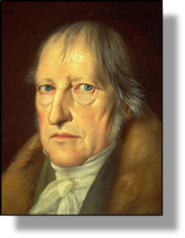 xxxxxThe German philosopher Georg Wilhelm Friedrich Hegel was the most influential thinker of the 19th century, extending the thought of his fellow countryman Immanuel Kant (1788 G3b), and playing a large part in shaping the content of modern philosophy. Believing, unlike Kant, that it was possible to embrace all knowledge within a single system, grounded in faith, he cast his thought over a wide variety of topics, leaving few if any philosophical stones unturned.
xxxxxThe German philosopher Georg Wilhelm Friedrich Hegel was the most influential thinker of the 19th century, extending the thought of his fellow countryman Immanuel Kant (1788 G3b), and playing a large part in shaping the content of modern philosophy. Believing, unlike Kant, that it was possible to embrace all knowledge within a single system, grounded in faith, he cast his thought over a wide variety of topics, leaving few if any philosophical stones unturned.
xxxxxHe argued that reason was progressive because, like a river which, fed by new streams, becomes broader as it travelled to the sea, so human knowledge was constantly being expanded, developed by a process he called “dialectic” (a term associated with the Greek philosopher Socrates). This “Hegelian Dialectic” was made up of three stages: firstly, the acceptance of a thesis which is thought to be true; secondly the realisation that there was an “antithesis”, a contradictory point of view; and, thirdly, the resolution of a “synthesis”, a new advanced concept arising out of the conflict between the two opposites. This concept, in its turn, became a thesis, and the whole process of intellectual or historical development was then repeated, each stage resulting in a higher level of truth (system illustrated below). And it was this gradual unfolding or evolution of thought, Hegel maintained, by which man could attain a “World Spirit” or “World Reason”, the sum total of reality. And the attainment of this ultimate truth went beyond Kant’s metaphysics, wherein he had restricted knowledge to the phenomena presented to the mind, regarding all else as being beyond human understanding.
xxxxxIn human affairs, this “world spirit” reached its highest level of self-realisation in art, religion and philosophy, whereby man became one with God. Art attained its Absolute in material forms; religion by means of symbols and images; and philosophy - the highest form of knowledge - by a truly rational process. And the history of the world was itself a rational process, to be seen in the gradual realisation of human freedom, a progression away from bondage which could not be achieved by individuals working alone, but only by the will of all within a unified state - in his case Prussia.
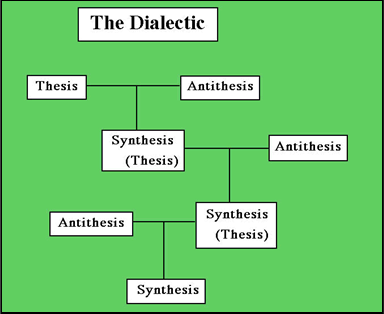 xxxxxHegel was born in Stuttgart, the son of a government revenue officer. He attended the city’s preparatory school, and it was there that he became versed in the Greek and Roman classics. Encouraged by his father to join the ministry, he studied theology and philosophy at the University of Tubingen, and it was here that he became friendly with the philosopher Friedrich Wilhelm Schelling. Having decided not to enter the church, for the next ten years he worked as a private tutor, first at Berne in Switzerland and then at Frankfurt. In 1801 his father died and left him some money, and he was then able to study at the University of Jena, eventually joining the teaching staff. It was while at Jena that he completed one of his major works, The Phenomenology of Mind (published 1807), but he had to take flight in October 1806 when the French occupied the city. He eventually settled in Nuremberg where he spent eight years as the headmaster of a local school. Here he published his The Science of Logic, finally completed in 1816. In that year he was appointed professor of philosophy at the University of Heidelberg, and the following year he produced a summary of his entire philosophy in his Encyclopedia of the Philosophical Sciences in Outline. Doubtless on the strength of this work, in 1818 he was invited to take the chair of philosophy at the University of Berlin, a prestigious appointment, and he remained there for the rest of his life. He died in November 1831 during an outbreak of cholera, leaving a wife and two sons.
xxxxxHegel was born in Stuttgart, the son of a government revenue officer. He attended the city’s preparatory school, and it was there that he became versed in the Greek and Roman classics. Encouraged by his father to join the ministry, he studied theology and philosophy at the University of Tubingen, and it was here that he became friendly with the philosopher Friedrich Wilhelm Schelling. Having decided not to enter the church, for the next ten years he worked as a private tutor, first at Berne in Switzerland and then at Frankfurt. In 1801 his father died and left him some money, and he was then able to study at the University of Jena, eventually joining the teaching staff. It was while at Jena that he completed one of his major works, The Phenomenology of Mind (published 1807), but he had to take flight in October 1806 when the French occupied the city. He eventually settled in Nuremberg where he spent eight years as the headmaster of a local school. Here he published his The Science of Logic, finally completed in 1816. In that year he was appointed professor of philosophy at the University of Heidelberg, and the following year he produced a summary of his entire philosophy in his Encyclopedia of the Philosophical Sciences in Outline. Doubtless on the strength of this work, in 1818 he was invited to take the chair of philosophy at the University of Berlin, a prestigious appointment, and he remained there for the rest of his life. He died in November 1831 during an outbreak of cholera, leaving a wife and two sons.
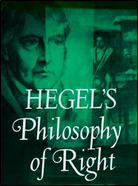
xxxxxHis last major work was The Philosophy of Right, written in 1821 while in Berlin, but a number of books were published after his death containing his lecture notes on the History of Fine Art, the History of Philosophy, the Philosophy of History and the Philosophy of Religion, papers in which he attempted a classification of religions. Together with his earlier works these amounted to 26 volumes, most of which had been translated into English by the end of the century. In his philosophical writing he leaned heavily on Greek thought, and he was influenced to varying degrees by the works of the Dutch philosopher Baruch Spinoza, the French social critic Jean Jacques Rousseau, and his fellow countrymen and philosophers Immanuel Kant, Johann Gottlieb Fichte, and his close friend (for a time) Friedrich Wilhelm Schelling.
xxxxxHegel’s philosophy is not always easy to understand - and, as we shall see, it was roundly criticised by the Danish philosopher Kierkegaard (1843 Va) - but the width and depth of his thought was quite remarkable, and his influence extensive, particularly in the matter of political and theological theory and, indeed, practice. Here his ideas were seized upon by both sides of the spectrum. The right-wing Hegelians accepted and emphasised the conservative values of his work (based on Christianity and the validity of the state), whilst those on the left, like the revolutionaries Friedrich Engels and Karl Marx, seeing a classless society as the ultimate objective - the Absolute in terms of the Hegelian dialectic - saw an attack upon the social and religious order of their time as an acceptable means of speeding up history!
Including:
Friedrich Wilhelm Schelling
and Arthur Schopenhauer

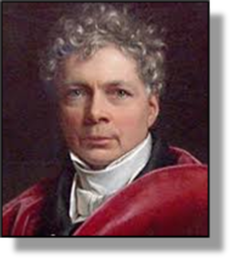 xxxxxThe German philosopher Friedrich Wilhelm Schelling (1775-1854), was a friend of Hegel for a number of years, though they eventually parted company. For much of his career he lived and worked in the shadow of Fichte and Hegel (particularly the latter), and this tended to stunt his influence and to cloud his own contribution, not fully appreciated until many years later. In many aspects his philosophy relates closely to their views, but it was continually evolving, and never quite made a coherent whole. At one point Hegel described his reasoning as “a tangled mass of abstractions”.
xxxxxThe German philosopher Friedrich Wilhelm Schelling (1775-1854), was a friend of Hegel for a number of years, though they eventually parted company. For much of his career he lived and worked in the shadow of Fichte and Hegel (particularly the latter), and this tended to stunt his influence and to cloud his own contribution, not fully appreciated until many years later. In many aspects his philosophy relates closely to their views, but it was continually evolving, and never quite made a coherent whole. At one point Hegel described his reasoning as “a tangled mass of abstractions”.
xxxxxSchelling was born in Leonberg, Wurttemberg, son of a Lutheran minister. A gifted child, he studied theology at the seminary in Tubingen, and it was there that he met Hegel and decided to take up philosophy. After working as a tutor at Leipzig for two years - during which time he advanced his theory on nature - he became a professor at Jena in 1798, where he helped found the romantic movement in philosophy. It was here that he fell out with Fitchte and worked with Hegel editing a philosophical journal. But this partnership did not last long. Soon after he had taken up a professorship at Wurzburg in 1803, his philosophical thought attracted strong criticism from Hegel, and their friendship came to an end. Saddened by this event, he moved to Munich in 1806, where he became general secretary of the Academy of Plastic Arts. Here his philosophy took a new direction with his work Of Human Freedom. In 1841 he went to Berlin at the invitation of the King of Prussia, but he failed to rekindle interest in his concepts and his career there was not a success.
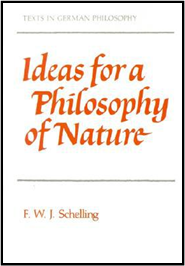 xxxxxAs a young man Schelling was clearly inspired by the works of Kant, Fichte and Spinoza, and his early expositions - On the Possibility and Form of Philosophy in General and Of the Ego as Principle of Philosophy - earned Fichte’s approval. In them he argued that God was not the Absolute because each person possessed his own Absolute ego. It was soon after this, while he was working as a private tutor in Leipzig, 1795 to 1797, that he came to the attention of the Romanticists through his Ideas for a Philosophy of Nature (his Naturphilosophie) produced in 1797. Then in 1800, having joined the staff at Jena, he produced his System of Transcendentalism. Unlike Fichte, who saw nature subordinate to mental life, Schelling argued that nature itself was purpose driven and was itself developing towards the absolute spirit. Thus history, he maintained, was a progression towards an absolute harmony of mind and nature, the difference between the two being a matter of degree, and nothing more. Both would eventually be absorbed in the Absolute or “World-Soul”. And in this development, Schelling considered that art played a predominant part, mediating between the two spheres because it united in itself - via artistic creation - the natural and the spiritual. Fichte, however, would in no way accept this concept, and there followed some virulent correspondence in which each attacked the other.
xxxxxAs a young man Schelling was clearly inspired by the works of Kant, Fichte and Spinoza, and his early expositions - On the Possibility and Form of Philosophy in General and Of the Ego as Principle of Philosophy - earned Fichte’s approval. In them he argued that God was not the Absolute because each person possessed his own Absolute ego. It was soon after this, while he was working as a private tutor in Leipzig, 1795 to 1797, that he came to the attention of the Romanticists through his Ideas for a Philosophy of Nature (his Naturphilosophie) produced in 1797. Then in 1800, having joined the staff at Jena, he produced his System of Transcendentalism. Unlike Fichte, who saw nature subordinate to mental life, Schelling argued that nature itself was purpose driven and was itself developing towards the absolute spirit. Thus history, he maintained, was a progression towards an absolute harmony of mind and nature, the difference between the two being a matter of degree, and nothing more. Both would eventually be absorbed in the Absolute or “World-Soul”. And in this development, Schelling considered that art played a predominant part, mediating between the two spheres because it united in itself - via artistic creation - the natural and the spiritual. Fichte, however, would in no way accept this concept, and there followed some virulent correspondence in which each attacked the other.
xxxxxAt first, Hegel took Schelling’s part in this dispute, and in 1802 they worked well together as co-editors of the Critical Journal of Philosophy, but this happy relationship was not destined to last. It was soon after this that Schelling developed what he termed his “philosophy of identity”, a largely pantheistic theory in which God was at one with the forces and laws of the universe, and the Absolute was the unity of man and nature. In his Phenomenology of Mind, published in 1807, Hegel rejected Schelling’s thesis. He accused him of plucking this concept of the Absolute out of thin air, based on “an emptiness of knowledge”.
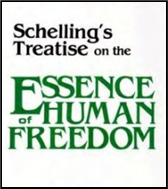 xxxxxA nervous, sensitive man, this break down in friendship deeply upset Schelling. Nor did it do his reputation any good. He retreated from public life and went to live in Munich, taking up an appointment in the arts. While in Munich, were he stayed until 1841, his work took on a new direction, and one that brought him a measure of success. In his work Of Human Freedom, written in 1809, he examined the part that the power of evil played in the world, and concluded that man only had complete freedom if it were a freedom for good and evil. There were in every living thing, he maintained, two elements: the dark side, characterised by impulse and carnal lust, and a formative side, sensible and clear-thinking. Because of man’s fall from grace, as described in the Bible, the darker side had entered the world and gained ascendancy, but this position had been reversed by the coming of Christ, God in man, and progress towards ultimate harmony had been resumed.
xxxxxA nervous, sensitive man, this break down in friendship deeply upset Schelling. Nor did it do his reputation any good. He retreated from public life and went to live in Munich, taking up an appointment in the arts. While in Munich, were he stayed until 1841, his work took on a new direction, and one that brought him a measure of success. In his work Of Human Freedom, written in 1809, he examined the part that the power of evil played in the world, and concluded that man only had complete freedom if it were a freedom for good and evil. There were in every living thing, he maintained, two elements: the dark side, characterised by impulse and carnal lust, and a formative side, sensible and clear-thinking. Because of man’s fall from grace, as described in the Bible, the darker side had entered the world and gained ascendancy, but this position had been reversed by the coming of Christ, God in man, and progress towards ultimate harmony had been resumed.
xxxxxSchelling failed to achieve a comprehensive system of his own, did not always give sufficient depth to his reasoning, and, in his early days in particular, leaned quite heavily on the theories of others. This said, his ideas on nature and his “philosophy of identity” were not without merit, and his insight into man’s own make-up, determined, as he saw it, by dark impulses as well as by reason, was a positive contribution to a deeper understanding of man’s place in the scheme of things. His thinking influenced, amongst others, Schopenhauer, Nietzsche and Freud.
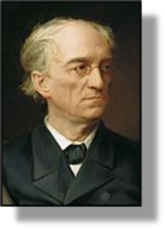
xxxxxIncidentally, during his career Schelling met and became friendly with the Russian lyric poet Fedor Ivanovich Tyutchev (1803-1873). Regarded as Russia’s greatest nature poet, Tyutchev was deeply proud of his motherland, and expressed his feelings in verse which was full of passion and imagery. He loved his poetry and his country, he said, “above all else in the world”. And he is noted, too, for his moving love poems, many full of anguish and inspired in the main by his affair with his daughter’s governess. His 300 poems included Silentium and A Dream at Sea. Today, he ranks alongside Aleksandre Pushkin and Mikhail Lermontov.
xxxxxThe German philosopher Friedrich Wilhelm Schelling (1775-1854) worked with Hegel during the early 1800s, but Hegel later criticised Schelling’s methodology and the friendship ended. His first works, centred on the principle of the Ego, were approved by the German philosopher Fichte, but he also lost his support when he attempted to prove that nature was not subordinate to mental life but was, in fact, developing towards the absolute spirit. From this he developed his “philosophy of identity”, claiming that the Absolute was the unity of man and nature. It was this theory that Hegel described as “a tangled mass of abstractions”. Such criticism virtually forced him into retirement. He settled in Munich, and it was here that he produced his Of Human Freedom. In this work he argued that there were two sides to man’s make-up, the dark side, characterised by impulse and carnal lust, and a formative side which was sensible and clear thinking. Because of man’s fall from grace, as described in the Bible, the darker side had gained ascendancy, but the position had been reversed by the coming of Christ, God in man, and progress towards ultimate unity had been resumed. Schelling’s philosophy was continually evolving and never quite made a coherent whole. Nonetheless his thinking influenced others, notably Schopenhauer, Nietzsche and Freud. His other major works were Ideas for a Philosophy of Nature (his Naturphilosophie), and his System of Transcendentalism, produced in 1800.
G3c-1802-1820-G3c-1802-1820-G3c-1802-1820-G3c-1802-1820-G3c-1802-1820-G3c
xxxxxThe German philosopher Arthur Schopenhauer (1788-1860), unlike his contemporaries Hegel and Schelling, accepted Kant’s theory that there was an unknowable, “noumenal world” beyond that which the mind perceived. However, he held that this realm could be entered by a “subterranean passage” where one could discover one’s real essence. This essence was an irrational, universal “Will” which, by its constant cycle of restless, unsatisfied desires caused pain, misery and death. Life was therefore pointless and of no value. Apart from an ill-defined process made possible by genuine acts of human kindness (as demonstrated by the saints), there was no escape from the effects of this will, though they could be briefly alleviated by a contemplation of music and the arts. This pessimistic and atheistic view of the world, contained in his major work The World as Will and Idea of 1818, was not readily understood at the time. A disappointed man, he became virtually a recluse from the early 1830s, but in his last ten years the ideas of this “pessimistic philosopher” gained ground, influencing, among others, Friedrich Nietzsche and Sigmund Freud and, in the artistic world, the music of Richard Wagner and the writing of Thomas Hardy.
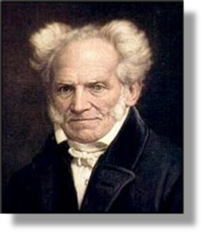 xxxxxA German philosopher at this time, Arthur Schopenhauer (1788-1860), unlike his contemporaries Hegel and Schelling, accepted Kant’s theory that there was an unknowable area - the noumenal world - beyond that which the mind perceives (the phenomenal world). He argued, however, that this “real inner nature of things” could in fact be reached by what he called a “subterranean passage”, entered by a back door which Kant had failed to spot. By this path one discovered one’s real essence, and this essence was an irrational, universal “Will”, a constant cycle of restless, unsatisfied desires which was trapped inside the individual, but could not be controlled by that individual. It had no set purpose, and was totally pointless and negative, but, being the true essence and inner principle of the universe, all were at its mercy and, as a consequence, suffered pain, misery, misfortune and death. However, Schopenhauer maintained that there were ways of overcoming this will, if only on a temporary basis. A contemplation of music and the arts, for example, could rid one of its constant demands, as could the realisation that, being mortal slaves to this universal will, our individual lives were of no value and death was not to be feared. But the only ultimate escape was the “turning of the will against itself”, an ill-defined process made possible by genuine acts of human kindness and compassion, as demonstrated by the saints.
xxxxxA German philosopher at this time, Arthur Schopenhauer (1788-1860), unlike his contemporaries Hegel and Schelling, accepted Kant’s theory that there was an unknowable area - the noumenal world - beyond that which the mind perceives (the phenomenal world). He argued, however, that this “real inner nature of things” could in fact be reached by what he called a “subterranean passage”, entered by a back door which Kant had failed to spot. By this path one discovered one’s real essence, and this essence was an irrational, universal “Will”, a constant cycle of restless, unsatisfied desires which was trapped inside the individual, but could not be controlled by that individual. It had no set purpose, and was totally pointless and negative, but, being the true essence and inner principle of the universe, all were at its mercy and, as a consequence, suffered pain, misery, misfortune and death. However, Schopenhauer maintained that there were ways of overcoming this will, if only on a temporary basis. A contemplation of music and the arts, for example, could rid one of its constant demands, as could the realisation that, being mortal slaves to this universal will, our individual lives were of no value and death was not to be feared. But the only ultimate escape was the “turning of the will against itself”, an ill-defined process made possible by genuine acts of human kindness and compassion, as demonstrated by the saints.
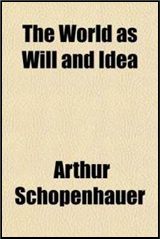 xxxxxThis atheistic and pessimistic view of the world, contained in his The World as Will and Idea, published in 1818, owed its thesis to ancient Hindu as well as Kant’s philosophy. It was not readily understood or appreciated at the time, but came to have a wide-ranging impact. The idea of a world full of suffering, controlled by an irrational will power which was active within each human individual, influenced, among others, the German philosopher and poet Friedrich Nietzsche, and the Austrian psychoanalyst Sigmund Freud. And the art world also made use of him. For example, aspects of his thought were used by the German composer Richard Wagner in his music dramas, and by the English writer Thomas Hardy in his novels.
xxxxxThis atheistic and pessimistic view of the world, contained in his The World as Will and Idea, published in 1818, owed its thesis to ancient Hindu as well as Kant’s philosophy. It was not readily understood or appreciated at the time, but came to have a wide-ranging impact. The idea of a world full of suffering, controlled by an irrational will power which was active within each human individual, influenced, among others, the German philosopher and poet Friedrich Nietzsche, and the Austrian psychoanalyst Sigmund Freud. And the art world also made use of him. For example, aspects of his thought were used by the German composer Richard Wagner in his music dramas, and by the English writer Thomas Hardy in his novels.
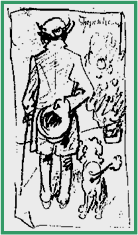 xxxxxSchopenhauer was born in Danzig (now Gdansk in Poland), but the family moved to Hamburg in 1793 (when Danzig came under the Prussians). He attended Gottingen University to study medicine, but in 1811 left to study philosophy at Berlin. Here he heard lectures from Fichte and the German preacher Schleiermacher, and, on completion of the course, earned a doctor of philosophy from the University of Jena. He then settled in Weimar for a while, and it was here that he immersed himself in the study of Hindu and Buddhist philosophies and mysticism. In March 1820, following the publication of his The World as Will and Idea, he obtained a lectureship at Berlin, but, after five years with little success, he turned his hand to translations and secondary works, spending the last 28 years of his life as a recluse in Frankfurt. To this period belongs his On the Will of Nature, in which he openly attacked Hegel and his followers, his essays - covering a wide range of topics - and a number of works updating his earlier publications.
xxxxxSchopenhauer was born in Danzig (now Gdansk in Poland), but the family moved to Hamburg in 1793 (when Danzig came under the Prussians). He attended Gottingen University to study medicine, but in 1811 left to study philosophy at Berlin. Here he heard lectures from Fichte and the German preacher Schleiermacher, and, on completion of the course, earned a doctor of philosophy from the University of Jena. He then settled in Weimar for a while, and it was here that he immersed himself in the study of Hindu and Buddhist philosophies and mysticism. In March 1820, following the publication of his The World as Will and Idea, he obtained a lectureship at Berlin, but, after five years with little success, he turned his hand to translations and secondary works, spending the last 28 years of his life as a recluse in Frankfurt. To this period belongs his On the Will of Nature, in which he openly attacked Hegel and his followers, his essays - covering a wide range of topics - and a number of works updating his earlier publications.
xxxxxDuring his career he became well known for his hostile attitude towards women, doubtless due to the bitter relationship he had with his mother, a novelist of some repute. He maintained that the attraction of the sexes had nothing to do with the feelings of sentimental love, but was due to the workings of the irrational will. Via his mother he became acquainted with Goethe, and it was this friendship that led to his On Vision and Colour, a work published in 1816 to support Goethe’s theory against that of Isaac Newton.
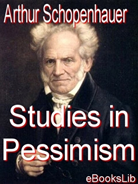 xxxxxIncidentally, Schopenhauer had no time for Hegel. He disliked him as a person and he opposed his ideas. When on the staff at Berlin he would purposefully organise his lectures to clash with those of Hegel so as to draw students away from his classes. Unfortunately for him, the reverse happened! Indeed, it was not until the last ten years of his life that this "philosopher of pessimism” gained recognition, and his system began to be taught in German universities, and gain adherents in other parts of Europe and in the United States.
xxxxxIncidentally, Schopenhauer had no time for Hegel. He disliked him as a person and he opposed his ideas. When on the staff at Berlin he would purposefully organise his lectures to clash with those of Hegel so as to draw students away from his classes. Unfortunately for him, the reverse happened! Indeed, it was not until the last ten years of his life that this "philosopher of pessimism” gained recognition, and his system began to be taught in German universities, and gain adherents in other parts of Europe and in the United States.






 xxxxxThe German philosopher Georg Wilhelm Friedrich Hegel was the most influential thinker of the 19th century, extending the thought of his fellow countryman Immanuel Kant (1788 G3b), and playing a large part in shaping the content of modern philosophy. Believing, unlike Kant, that it was possible to embrace all knowledge within a single system, grounded in faith, he cast his thought over a wide variety of topics, leaving few if any philosophical stones unturned.
xxxxxThe German philosopher Georg Wilhelm Friedrich Hegel was the most influential thinker of the 19th century, extending the thought of his fellow countryman Immanuel Kant (1788 G3b), and playing a large part in shaping the content of modern philosophy. Believing, unlike Kant, that it was possible to embrace all knowledge within a single system, grounded in faith, he cast his thought over a wide variety of topics, leaving few if any philosophical stones unturned.  xxxxxHegel was born in Stuttgart, the son of a government revenue officer. He attended the city’s preparatory school, and it was there that he became versed in the Greek and Roman classics. Encouraged by his father to join the ministry, he studied theology and philosophy at the University of Tubingen, and it was here that he became friendly with the philosopher Friedrich Wilhelm Schelling. Having decided not to enter the church, for the next ten years he worked as a private tutor, first at Berne in Switzerland and then at Frankfurt. In 1801 his father died and left him some money, and he was then able to study at the University of Jena, eventually joining the teaching staff. It was while at Jena that he completed one of his major works, The Phenomenology of Mind (published 1807), but he had to take flight in October 1806 when the French occupied the city. He eventually settled in Nuremberg where he spent eight years as the headmaster of a local school. Here he published his The Science of Logic, finally completed in 1816. In that year he was appointed professor of philosophy at the University of Heidelberg, and the following year he produced a summary of his entire philosophy in his Encyclopedia of the Philosophical Sciences in Outline. Doubtless on the strength of this work, in 1818 he was invited to take the chair of philosophy at the University of Berlin, a prestigious appointment, and he remained there for the rest of his life. He died in November 1831 during an outbreak of cholera, leaving a wife and two sons.
xxxxxHegel was born in Stuttgart, the son of a government revenue officer. He attended the city’s preparatory school, and it was there that he became versed in the Greek and Roman classics. Encouraged by his father to join the ministry, he studied theology and philosophy at the University of Tubingen, and it was here that he became friendly with the philosopher Friedrich Wilhelm Schelling. Having decided not to enter the church, for the next ten years he worked as a private tutor, first at Berne in Switzerland and then at Frankfurt. In 1801 his father died and left him some money, and he was then able to study at the University of Jena, eventually joining the teaching staff. It was while at Jena that he completed one of his major works, The Phenomenology of Mind (published 1807), but he had to take flight in October 1806 when the French occupied the city. He eventually settled in Nuremberg where he spent eight years as the headmaster of a local school. Here he published his The Science of Logic, finally completed in 1816. In that year he was appointed professor of philosophy at the University of Heidelberg, and the following year he produced a summary of his entire philosophy in his Encyclopedia of the Philosophical Sciences in Outline. Doubtless on the strength of this work, in 1818 he was invited to take the chair of philosophy at the University of Berlin, a prestigious appointment, and he remained there for the rest of his life. He died in November 1831 during an outbreak of cholera, leaving a wife and two sons.

 xxxxxThe German philosopher Friedrich Wilhelm Schelling (1775-
xxxxxThe German philosopher Friedrich Wilhelm Schelling (1775- xxxxxAs a young man Schelling was clearly inspired by the works of Kant, Fichte and Spinoza, and his early expositions -
xxxxxAs a young man Schelling was clearly inspired by the works of Kant, Fichte and Spinoza, and his early expositions - xxxxxA nervous, sensitive man, this break down in friendship deeply upset Schelling. Nor did it do his reputation any good. He retreated from public life and went to live in Munich, taking up an appointment in the arts. While in Munich, were he stayed until 1841, his work took on a new direction, and one that brought him a measure of success. In his work Of Human Freedom, written in 1809, he examined the part that the power of evil played in the world, and concluded that man only had complete freedom if it were a freedom for good and evil. There were in every living thing, he maintained, two elements: the dark side, characterised by impulse and carnal lust, and a formative side, sensible and clear-
xxxxxA nervous, sensitive man, this break down in friendship deeply upset Schelling. Nor did it do his reputation any good. He retreated from public life and went to live in Munich, taking up an appointment in the arts. While in Munich, were he stayed until 1841, his work took on a new direction, and one that brought him a measure of success. In his work Of Human Freedom, written in 1809, he examined the part that the power of evil played in the world, and concluded that man only had complete freedom if it were a freedom for good and evil. There were in every living thing, he maintained, two elements: the dark side, characterised by impulse and carnal lust, and a formative side, sensible and clear-
 xxxxxA German philosopher at this time, Arthur Schopenhauer (1788-
xxxxxA German philosopher at this time, Arthur Schopenhauer (1788- xxxxxThis atheistic and pessimistic view of the world, contained in his The World as Will and Idea, published in 1818, owed its thesis to ancient Hindu as well as Kant’s philosophy. It was not readily understood or appreciated at the time, but came to have a wide-
xxxxxThis atheistic and pessimistic view of the world, contained in his The World as Will and Idea, published in 1818, owed its thesis to ancient Hindu as well as Kant’s philosophy. It was not readily understood or appreciated at the time, but came to have a wide- xxxxxSchopenhauer was born in Danzig (now Gdansk in Poland), but the family moved to Hamburg in 1793 (when Danzig came under the Prussians). He attended Gottingen University to study medicine, but in 1811 left to study philosophy at Berlin. Here he heard lectures from Fichte and the German preacher Schleiermacher, and, on completion of the course, earned a doctor of philosophy from the University of Jena. He then settled in Weimar for a while, and it was here that he immersed himself in the study of Hindu and Buddhist philosophies and mysticism. In March 1820, following the publication of his The World as Will and Idea, he obtained a lectureship at Berlin, but, after five years with little success, he turned his hand to translations and secondary works, spending the last 28 years of his life as a recluse in Frankfurt. To this period belongs his On the Will of Nature, in which he openly attacked Hegel and his followers, his essays -
xxxxxSchopenhauer was born in Danzig (now Gdansk in Poland), but the family moved to Hamburg in 1793 (when Danzig came under the Prussians). He attended Gottingen University to study medicine, but in 1811 left to study philosophy at Berlin. Here he heard lectures from Fichte and the German preacher Schleiermacher, and, on completion of the course, earned a doctor of philosophy from the University of Jena. He then settled in Weimar for a while, and it was here that he immersed himself in the study of Hindu and Buddhist philosophies and mysticism. In March 1820, following the publication of his The World as Will and Idea, he obtained a lectureship at Berlin, but, after five years with little success, he turned his hand to translations and secondary works, spending the last 28 years of his life as a recluse in Frankfurt. To this period belongs his On the Will of Nature, in which he openly attacked Hegel and his followers, his essays - xxxxxIncidentally, Schopenhauer had no time for Hegel. He disliked him as a person and he opposed his ideas. When on the staff at Berlin he would purposefully organise his lectures to clash with those of Hegel so as to draw students away from his classes. Unfortunately for him, the reverse happened! Indeed, it was not until the last ten years of his life that this "philosopher of pessimism” gained recognition, and his system began to be taught in German universities, and gain adherents in other parts of Europe and in the United States.
xxxxxIncidentally, Schopenhauer had no time for Hegel. He disliked him as a person and he opposed his ideas. When on the staff at Berlin he would purposefully organise his lectures to clash with those of Hegel so as to draw students away from his classes. Unfortunately for him, the reverse happened! Indeed, it was not until the last ten years of his life that this "philosopher of pessimism” gained recognition, and his system began to be taught in German universities, and gain adherents in other parts of Europe and in the United States.

